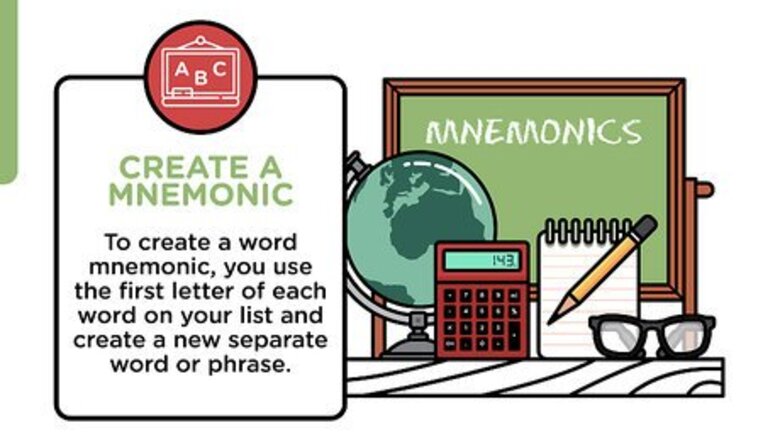
views
Using Common Methods to Remember Your List
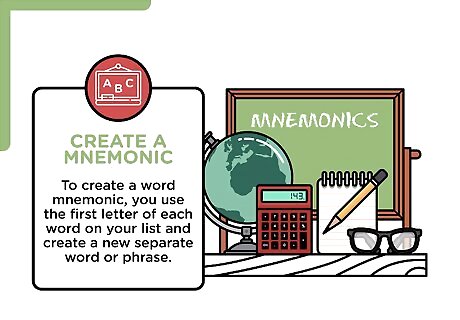
Create a mnemonic. A mnemonic is a device used to remember lists in a creative and catchy way. One of the most common forms is by creating a word mnemonic. To create a word mnemonic, you use the first letter of each word on your list and create a new separate word or phrase. The aim of creating a mnemonic is to make it memorable so you can have an easier time at recalling the list when you need it. Mnemonics can be used for any type of list, ranging from remembering the order of the planets of the solar system to recalling the order of the operations of math, as other common lists we need to know. Here are some common examples that are used: For the order of math operations, the common approach is the mnemonic "PEMDAS." In English grammar, "FANBOY" is a popular mnemonic device for recalling conjunctions. For remembering the bones in the wrist, a common mnemonic is, Never Lick Tilly’s Popsicle, Mother Might Come Home. Navicular, Lunate, Triquetrum, Pisiform, Multongular, Multongular, Capitate, Hamate. Another form of mnemonic is called an expression mnemonic. It works similar to the word mnemonic only you arrange the letters to remember the order of the list. For example to remember the order of the solar system from the sun outward, we use: Mercury, Venus, Earth, Mars, Jupiter, Saturn, Uranus, Neptune, and Pluto.
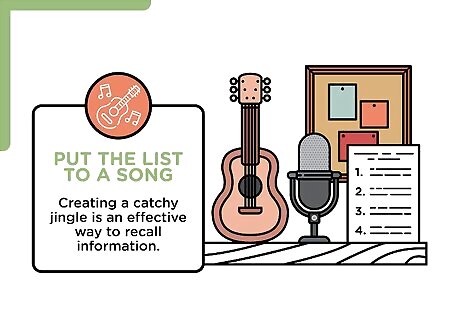
Put the list to a song. Creating a catchy jingle is an effective way to recall information. Maybe you have a favorite song or tune that goes perfectly with a list that you need to remember. Popular lists that are connected to a song are the ABC’s and the “50 Nifty United States” song to recall the order of states.
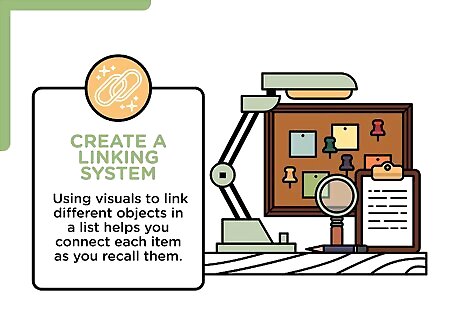
Create a linking system. Using visuals to link different objects in a list helps you connect each item as you recall them. If you can think of powerful, creative visuals to associate with each image, you have a better chance at remembering your list. For example, take four items you need to remember. The list is as follows: a pencil, a wallet, a candle, and a bracelet. Next, link each object to the next in a creative and visual way. Link the pencil to the wallet. Think of the pencil looking in a wallet. Link the wallet to the candle. Think of the wallet sitting on top of the candle. Link the candle to the bracelet. Think of the candle wearing a bracelet. Link the bracelet to the flower. Think of a bracelet holding a flower. This type of strategy may be used for longer lists as well. Just keep thinking of different images to help you remember each item on the list.
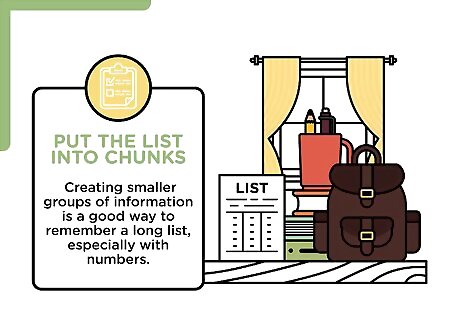
Put the list into chunks. Creating smaller groups of information is a good way to remember a long list, especially with numbers. This is generally referred to as “chunking” which means taking a long list and trying to remember the list by thinking about it in smaller bits. By breaking the list up into smaller chunks, you can have an easier time at committing the list to memory instead of trying to memorize the entire list at one time. One common form of chunking is with telephone numbers. A new telephone number is often provided in a group of seven or ten numbers (depending on if you need to recall the area code). For example, if the telephone number is 1237894563, breaking it up in chunks will allow you to recall it more easily than trying to recall the numbers in a long sequence. Grouping it in a chunk, 123-789-4563, will help you remember it better.
Applying Alternative Techniques to Remember Lists
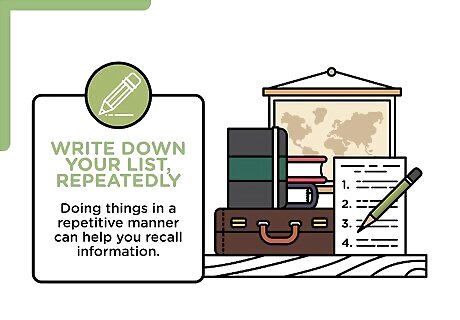
Write down your list, repeatedly. Doing things in a repetitive manner can help you recall information. Writing things down not only helps you learn the material, but you can remember the things you write if you do so in an organized and effective manner. A common method of organized writing is by the use of note cards. For example, if you are being tested on the list of elements on the Periodic Table, you could write the element symbol on the front of the card, and its name on the back. After you’ve written each element down, go back and write them again. Once you feel like you have a good grasp of the list, start flipping through the cards as many times as you need to help you memorize the list.
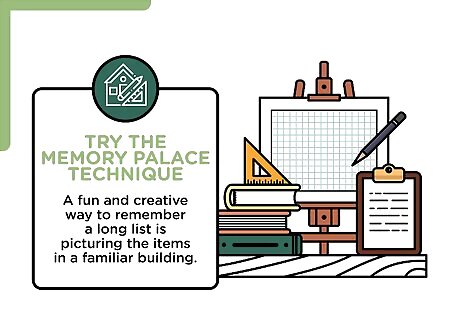
Try the memory palace technique. A fun and creative way to remember a long list is picturing the items in a familiar building. You can picture your house, school, office, or any other physical building with separate rooms. Depending on the number of items you want to remember, you can imagine a one-room apartment (with few rooms) or a castle (with multiple rooms). If you have a long list to remember, such as a shopping list, picturing your home would be fine. For example, imagine that you live in a house. You have five rooms. There are two bedrooms, one bathroom, a living room, and a kitchen. You have a shopping list composed of: shoes, pants, socks, shirts, and a jacket. Picture your list of items in each of your rooms. Once you think of the rooms in your house, start visually placing all the items from your list in a different room. You walk in the front door and stand in the entrance. To your left is the living room where you see dirty shoes on the couch. You turn to your right and there is the dining room. Draped across the chandelier is your nice pair of pants. You walk through the dining room and enter the kitchen. There lying on the toaster is a pair of socks. You leave the kitchen and walk down the hallway to the first bedroom. As you peek into the bedroom, you notice your sweater hanging from the fan. You decide to keep exploring. Next is the bathroom. You see a jacket taking a bath in the tub. You keep walking and come to the second room. You see a jacket hanging out the window, as though trying to make an escape. Try it out. After you’ve imagined going through the house a couple times, picturing the different items scattered about the house, check your memory and see if you can remember everything on your list.

Become interested in your list. While some lists are fun, such as a shopping list for a party, some lists can be kind or boring or mundane. The more interested you are in your list, the better chance you have at recalling the information when you need to. For example, a list of chores can be pretty boring. Make it interesting by rewarding yourself at completion. You not only will remember the list of things you have to get done, but you will become interested in completing them as quickly as possible.
Improving Your Memory

Give your brain a workout. As you get older, your brain's capacity to remember things decreases over time. Your brain stays intact, it just has a difficult time at recalling easy information. One way you can improve your brain's ability to recall and build your memory is by exercising your brain muscles through challenges and stimulation. Word games such as Sudoku and cross word puzzles are a good way to challenge your brain muscles. They require you to think critically and keep you engaged in the activity. Always aim to do something new and exciting. Doing activities that you are used to doing, will not help with building memory. If you play a musical instrument, try to learn a new piece, instead of always playing the one you know from memory.
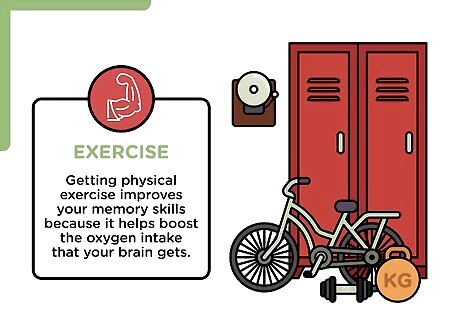
Exercise. Getting physical exercise improves your memory skills because it helps boost the oxygen intake that your brain gets. Exercise not only aids with keeping your brain sharp, it also reduces your risks of memory loss disorders, such as diabetes and heart disease. Exercises that implement focus to detail or complex motor skills are beneficial to improving your memory, such as planks or burpees. Doing cardiovascular exercises, such as running and biking, for 20 to 30 minutes a day can help your brain remember things more often. Taking little exercise breaks while studying or working is also an effective way to give your brain a jumpstart if you’re feeling tired and unable to focus.
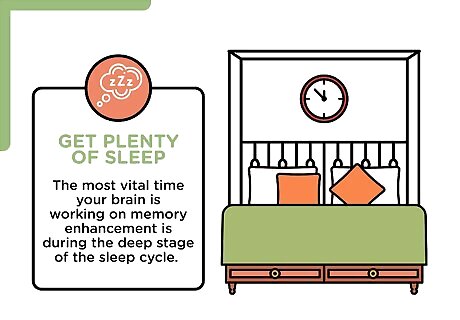
Get plenty of sleep. Sleeping helps your brain with memory conciliation. Aim to get your required number of hours of sleep every night, as the most vital time your brain is working on memory enhancement is during the deep stage of the sleep cycle.

















Comments
0 comment